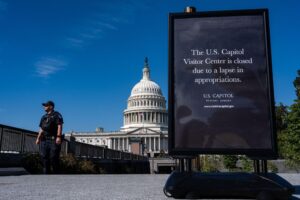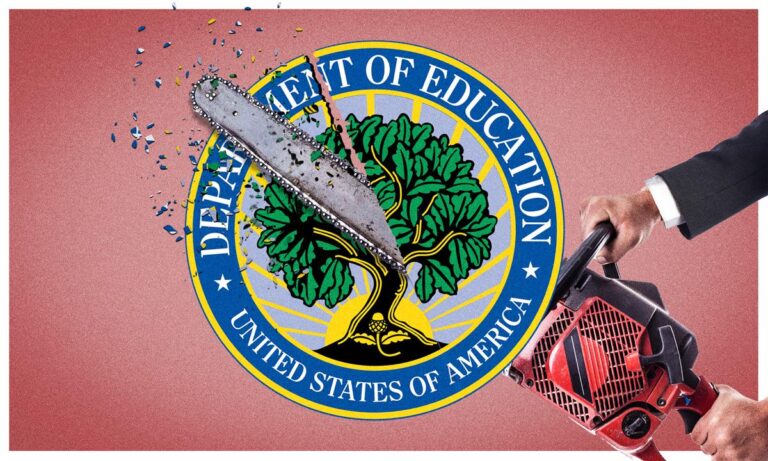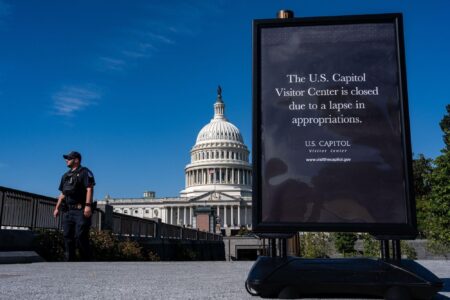Transforming Federal Education Oversight: A New Era for the U.S. Education Department
The U.S. Department of Education is on the brink of a profound transformation, with proposals aiming to slash its workforce by approximately 50%. This initiative aligns with President Donald Trump’s broader agenda to streamline or potentially dismantle the federal agency responsible for education oversight. Currently employing over 4,300 staff members, the department faces a dramatic downsizing that could redefine its federal role in education governance. These developments have sparked intense discussions about the future of federal involvement in education and the potential consequences for schools and students nationwide.
Proponents of this restructuring advocate for decentralizing education governance, shifting more authority to state and local entities. The plan also envisions transferring some responsibilities to other federal bodies, thereby narrowing the department’s direct functions. Below is a detailed comparison of the department’s existing staffing and duties versus the proposed changes:
| Aspect | Current Status | Proposed Adjustment |
|---|---|---|
| Workforce Size | Approximately 4,300 employees | Reduced to about 2,150 employees |
| Core Responsibilities |
|
|
The debate continues as stakeholders weigh the potential efficiency improvements against the risks of weakening federal safeguards and support systems in education.
Consequences of Reducing Federal Education Staff on Programs and Services
Cutting the U.S. Department of Education’s workforce by half would represent a seismic shift in how federal education programs are managed and delivered. This downsizing threatens to undermine the department’s ability to effectively administer critical initiatives aimed at enhancing educational outcomes across the country. Key areas likely to experience significant impacts include:
- Oversight of Title I Funding – Programs designed to support underprivileged schools may face reduced supervision, risking delays and inefficiencies.
- Special Education Enforcement – Staffing cuts could slow the enforcement of mandates under the Individuals with Disabilities Education Act (IDEA), affecting services for students with disabilities.
- Administration of Federal Student Aid – Fewer personnel may lead to longer processing times and challenges in managing financial aid programs.
Additionally, the department’s capacity to provide technical assistance and policy guidance to states and school districts could diminish, potentially widening educational disparities. The reduction also threatens the department’s role in collecting and analyzing data, which is vital for crafting informed, evidence-based education policies.
| Program | Projected Staffing Reduction | Likely Outcome |
|---|---|---|
| Title I Grants | 40% decrease | Slower review and allocation of funds |
| Special Education Compliance | 50% decrease | Weakened monitoring and enforcement |
| Student Loan Services | 35% decrease | Extended processing delays |
Stakeholder Perspectives on the Future of the Education Department
Educators and school leaders have expressed significant apprehension regarding the proposed workforce reductions, cautioning that such cuts could erode essential support structures for students and educational institutions. Many argue that halving the department’s staff risks losing critical expertise necessary for upholding civil rights protections and ensuring equitable education across diverse communities. Teacher unions have labeled the proposal as “short-sighted,” underscoring the importance of federal oversight in maintaining consistent educational standards nationwide.
Policymakers remain divided on the issue:
- Advocates for Reduction: Favor smaller federal government and believe education decisions should primarily rest with states and local authorities.
- Opponents: Warn that dismantling the department could lead to regulatory confusion and exacerbate inequalities in resource distribution.
- Moderate Voices: Recommend restructuring the department to preserve essential functions while cutting bureaucratic excess.
| Group | Stance | Primary Concern |
|---|---|---|
| Teachers’ Unions | Strong Opposition | Loss of advocacy and support for educators and students |
| Conservative Legislators | Support | Reduction of federal oversight and control |
| Education Advocacy Organizations | Mixed | Balancing efficiency with equitable access |
| State Education Agencies | Cautious | Concerns over increased responsibilities and funding adequacy |
Adapting to Federal Education Changes: Strategies for Schools and Districts
In light of the anticipated downsizing of the federal education workforce, schools and districts must focus on building resilience and flexibility. Diversifying revenue streams beyond federal funding is crucial; this can include tapping into state grants, forging partnerships with private organizations, and collaborating with nonprofits. Strengthening community relationships fosters a cooperative environment that supports resource sharing and program sustainability, helping to offset federal cutbacks. Furthermore, investing in technology infrastructure and expanding remote learning capabilities can ensure uninterrupted educational access during periods of transition.
Effective communication and advocacy are also vital. Educators, administrators, and stakeholders should unite to advocate for sustained investment in education, emphasizing the long-term benefits of federal support. The table below highlights practical approaches to managing potential disruptions:
| Approach | Focus | Expected Benefit |
|---|---|---|
| Funding Diversification | Financial Security | Reduces reliance on federal funds |
| Community Collaboration | Support Networks | Enhances local partnerships and resource sharing |
| Investment in Digital Learning | Technology Access | Maintains educational continuity during disruptions |
| Advocacy and Outreach | Policy Engagement | Strengthens collective influence on education policy |
Conclusion: The Future of Federal Education Policy
The proposed halving of the U.S. Department of Education’s workforce represents a pivotal moment in the evolution of federal education policy under the Trump administration. As discussions unfold regarding the department’s future, educators, policymakers, and stakeholders will be closely observing how these changes affect schools, students, and educational programs nationwide. The coming months will be critical in determining how this restructuring reshapes the American education landscape, with lasting implications for equity, access, and quality.







